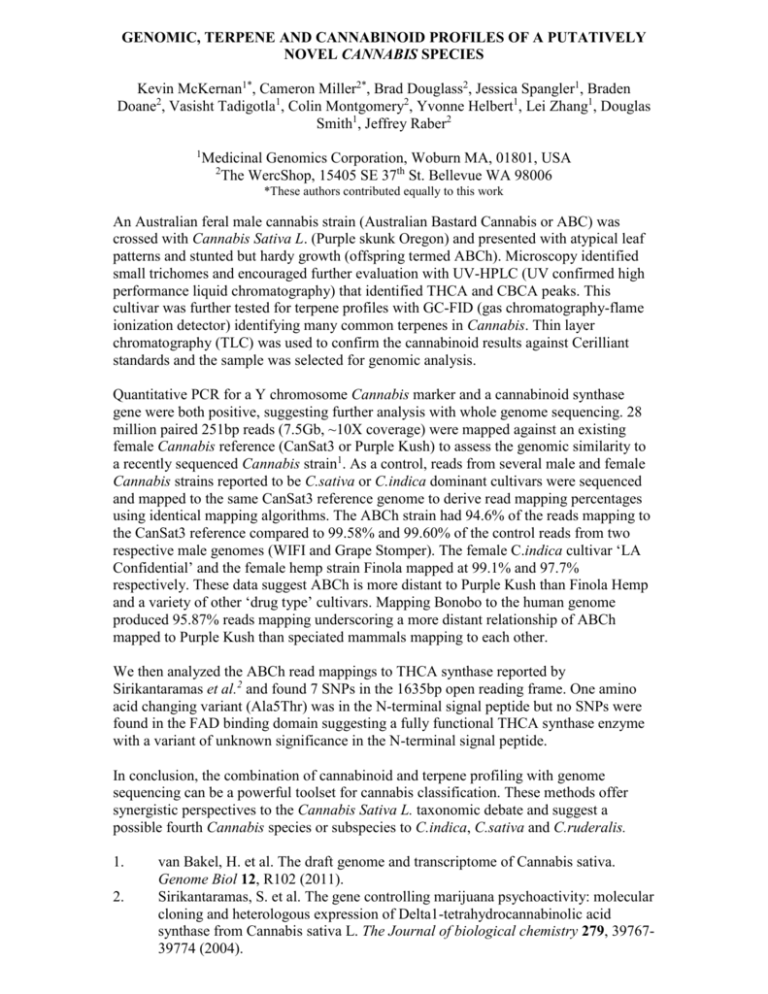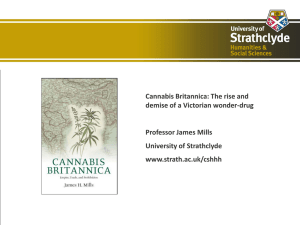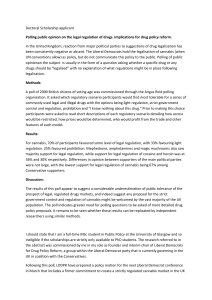Genomic-and-cannabinoid-profile-of-a-putatively-novel
advertisement

GENOMIC, TERPENE AND CANNABINOID PROFILES OF A PUTATIVELY NOVEL CANNABIS SPECIES Kevin McKernan1*, Cameron Miller2*, Brad Douglass2, Jessica Spangler1, Braden Doane2, Vasisht Tadigotla1, Colin Montgomery2, Yvonne Helbert1, Lei Zhang1, Douglas Smith1, Jeffrey Raber2 1 Medicinal Genomics Corporation, Woburn MA, 01801, USA 2 The WercShop, 15405 SE 37th St. Bellevue WA 98006 *These authors contributed equally to this work An Australian feral male cannabis strain (Australian Bastard Cannabis or ABC) was crossed with Cannabis Sativa L. (Purple skunk Oregon) and presented with atypical leaf patterns and stunted but hardy growth (offspring termed ABCh). Microscopy identified small trichomes and encouraged further evaluation with UV-HPLC (UV confirmed high performance liquid chromatography) that identified THCA and CBCA peaks. This cultivar was further tested for terpene profiles with GC-FID (gas chromatography-flame ionization detector) identifying many common terpenes in Cannabis. Thin layer chromatography (TLC) was used to confirm the cannabinoid results against Cerilliant standards and the sample was selected for genomic analysis. Quantitative PCR for a Y chromosome Cannabis marker and a cannabinoid synthase gene were both positive, suggesting further analysis with whole genome sequencing. 28 million paired 251bp reads (7.5Gb, ~10X coverage) were mapped against an existing female Cannabis reference (CanSat3 or Purple Kush) to assess the genomic similarity to a recently sequenced Cannabis strain1. As a control, reads from several male and female Cannabis strains reported to be C.sativa or C.indica dominant cultivars were sequenced and mapped to the same CanSat3 reference genome to derive read mapping percentages using identical mapping algorithms. The ABCh strain had 94.6% of the reads mapping to the CanSat3 reference compared to 99.58% and 99.60% of the control reads from two respective male genomes (WIFI and Grape Stomper). The female C.indica cultivar ‘LA Confidential’ and the female hemp strain Finola mapped at 99.1% and 97.7% respectively. These data suggest ABCh is more distant to Purple Kush than Finola Hemp and a variety of other ‘drug type’ cultivars. Mapping Bonobo to the human genome produced 95.87% reads mapping underscoring a more distant relationship of ABCh mapped to Purple Kush than speciated mammals mapping to each other. We then analyzed the ABCh read mappings to THCA synthase reported by Sirikantaramas et al.2 and found 7 SNPs in the 1635bp open reading frame. One amino acid changing variant (Ala5Thr) was in the N-terminal signal peptide but no SNPs were found in the FAD binding domain suggesting a fully functional THCA synthase enzyme with a variant of unknown significance in the N-terminal signal peptide. In conclusion, the combination of cannabinoid and terpene profiling with genome sequencing can be a powerful toolset for cannabis classification. These methods offer synergistic perspectives to the Cannabis Sativa L. taxonomic debate and suggest a possible fourth Cannabis species or subspecies to C.indica, C.sativa and C.ruderalis. 1. 2. van Bakel, H. et al. The draft genome and transcriptome of Cannabis sativa. Genome Biol 12, R102 (2011). Sirikantaramas, S. et al. The gene controlling marijuana psychoactivity: molecular cloning and heterologous expression of Delta1-tetrahydrocannabinolic acid synthase from Cannabis sativa L. The Journal of biological chemistry 279, 3976739774 (2004).







